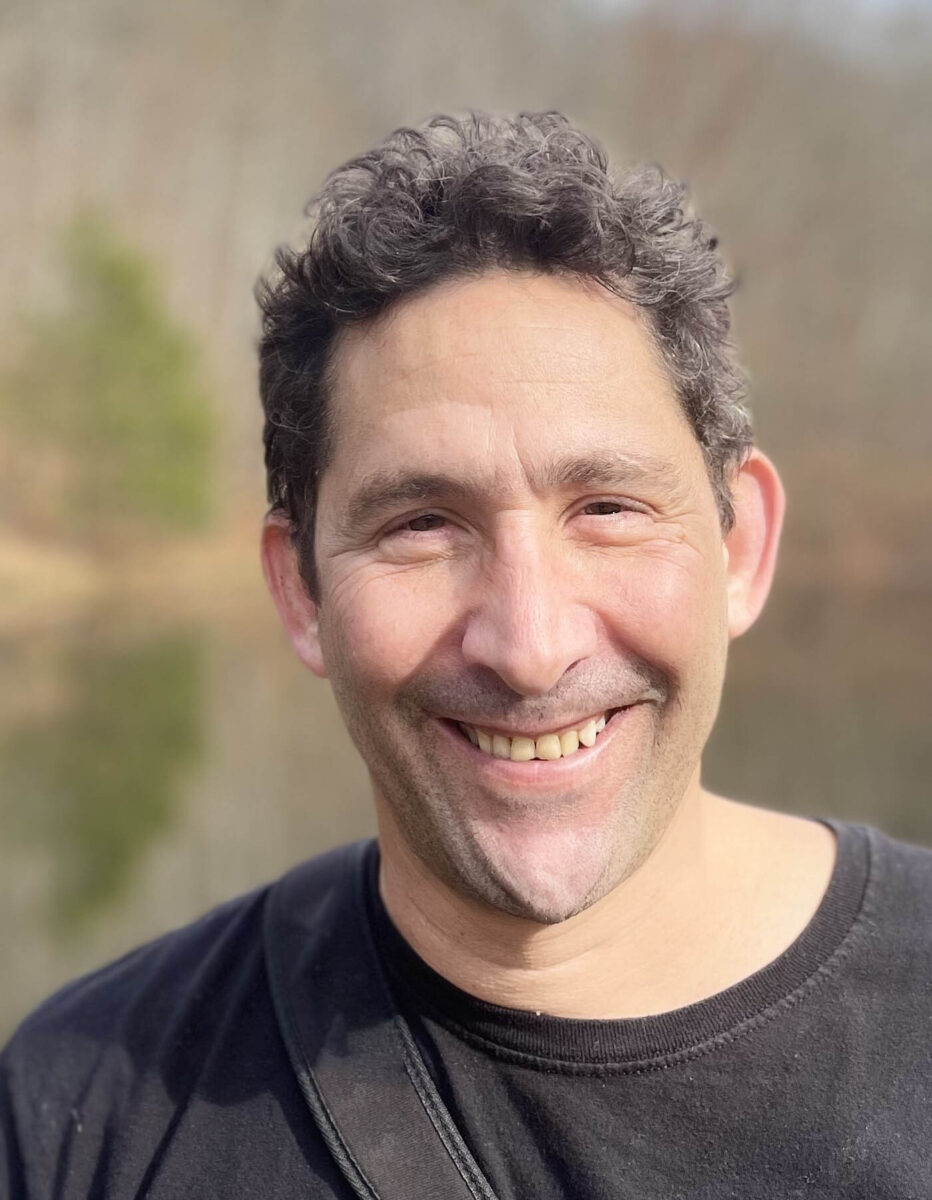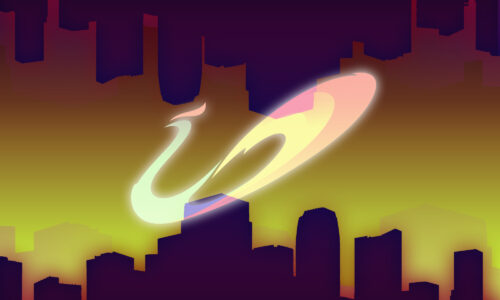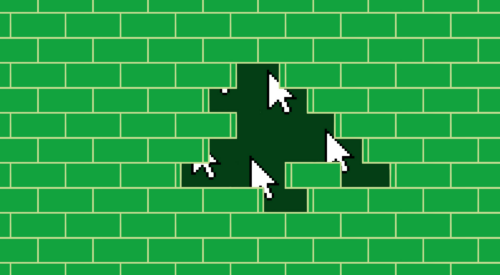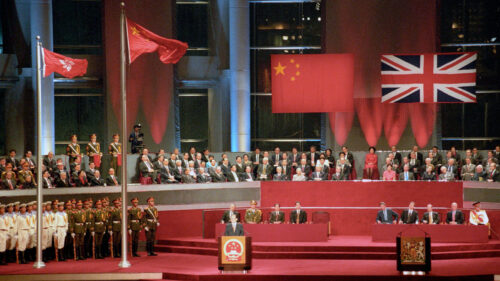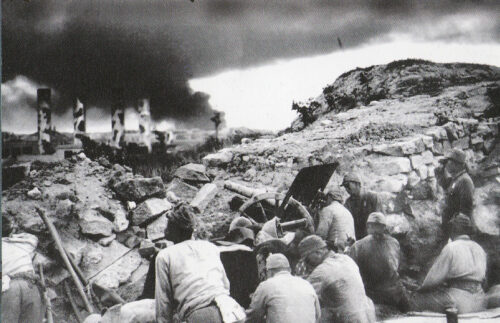Beijing sees ‘signs of terrorism’ as Hong Kong airport shuts down

It’s been a relatively quiet news day in most of China today, but not in Hong Kong, where the world’s eighth-busiest airport was shut down while Chinese government officials and state media delivered increasingly menacing messages to the protesters.
Hong Kong has just seen “its darkest weekend in contemporary history,” says this protester in a video clip from Radio Free Asia as she complains of the police calling citizens “cockroaches” during two days of violent clashes. Beijing has warned of incipient “terrorism” — a word that will be used to license the coming crackdown.
Hong Kong airport shut down on Monday, August 12, grounding “around 200 flights and affecting many others worldwide, after thousands of protesters swarmed the main terminal building in the biggest disruption yet to the city’s economy since demonstrations escalated in June,” reports the Straits Times. Flights might resume Tuesday, “depending on recovery operations.”
Beijing said the protests are showing “signs of terrorism.” Yáng Guāng 杨光, the spokesperson for the Chinese government’s Hong Kong and Macau Affairs Office who last week warned protesters that if they “play with fire, they’ll get incinerated” (玩火者必自焚 wánhuǒzhě bì zìfén), “read out a stern statement to Hong Kong media in Beijing, saying the city had come to a ‘critical moment’ and vowing to clamp down on violent crime with an ‘iron fist,’” according to the South China Morning Post. Xinhua’s language went a little further: “Hong Kong will slide into a bottomless abyss if the terror atrocities are allowed to continue.”
Anger at the police is growing. After a weekend of protests, activist Nathan Law (羅冠聰 Luó Guāncōng) tweeted that today, “August 12, marks the single most violent day in more than two months of the Hong Kong protests as we see the police all across town acting completely out of their control.”
1. THREAD: Today, August 12, marks the single most violent day in more than two months of the Hong Kong protests as we see the police all across town acting completely out of their control. Below is a list of what happened — again, all within a SINGLE DAY.
— Nathan Law 羅冠聰 (@nathanlawkc) August 11, 2019
He lists a variety of police actions, including:
- Shooting a female protester in close distance, which hit her in the right eye and blinded her permanently, according to information from doctors.
- Framing protesters as aggressive and arresting them on much harsher charges, after putting weapons inside their bags the moment they were pressed against the wall or ground.
- Allowing thugs — many with ties to organized crime, based on experience from previous incidents — to attack protesters and even passersby indiscriminately.
- Firing multiple canisters of tear gas inside Kwai Fong MTR station, which violated the factory instructions of no usage indoors.
- Impersonating protesters by wearing the same gear (yellow helmets, black masks, etc.) and then ambushing them on-site just as uniformed cops arrived for mass arrests.
“The People’s Armed Police have been assembling in Shenzhen, a city bordering Hong Kong, in advance of apparent large-scale exercises,” says the Global Times, in a tweet that shows video footage of armored vehicles driving into Shenzhen set to kitschy martial soundtrack. The PAP or wǔjǐng 武警 are part of China’s military, primarily responsible for internal security and “stability maintenance,” riot control, and antiterrorism. See also this video from Shenzhen resident Twitter user @g_helleu.
“Cathay Pacific on Monday warned its staff that those who ‘support or participate in illegal protests’ in Hong Kong could be fired,” reports CNN. This comes after Friday’s news that Beijing has banned Cathay Pacific flight crew who protest from Chinese airspace.
“Chinese state-run companies have told employees to avoid taking Cathay Pacific Airways flights,” says Bloomberg (porous paywall).
WHAT’S GOING TO HAPPEN NEXT?
Whatever comes next is not going to be nice and may be very nasty indeed. As Beijing ratchets up the rhetoric, the protesters show no signs of flagging. In a Twitter thread that gives a timeline of Chinese government actions, scholar Sebastian Veg describes “the crystallization of a 4-pronged strategy”:
https://twitter.com/sebastianveghk/status/1160501935075729408
- Hong Kong police will be used to intimidate protesters through force and to arrest the “violent extremists” aka “frontline protesters” (rumored to number in the thousands).
- The judiciary will come under further pressure from the prosecution using politicized charges.
- Patriotic forces must be mobilized to reunify the extremely disunited pro-establishment camp: businesses will face retaliation; universities and public institutions in Hong Kong need to be brought back under control through internal discipline.HK business interests, so far somewhat sympathetic to the protests, were threatened with retaliation and boycott if they do not actively oppose the protests. And calls from pro-establishment camp for an in-depth inquiry or resignation of the chief executive immediately ceased and attacks on “foreign forces” were stepped up.
- Turn Hong Kong public opinion against the movement and isolate the “violent extremists” from the “patriotic silent majority,” especially highlighting the economic impact of protests.
Further reporting:
- Cathay Pacific, icon of Hong Kong’s rise, now reflects China’s grip / NYT (porous paywall)
- Hong Kong police top brass face barrage of questions over use of weapons, injuries, undercover tactics/ HKFP
- Elite police ‘raptor’ squad went undercover to target radical Hong Kong protesters, insiders say / SCMP
- Hong Kong protests: brutal undercover police tactics spark outcry / Guardian
- Beijing’s new weapon to muffle Hong Kong protests: fake news / Guardian
